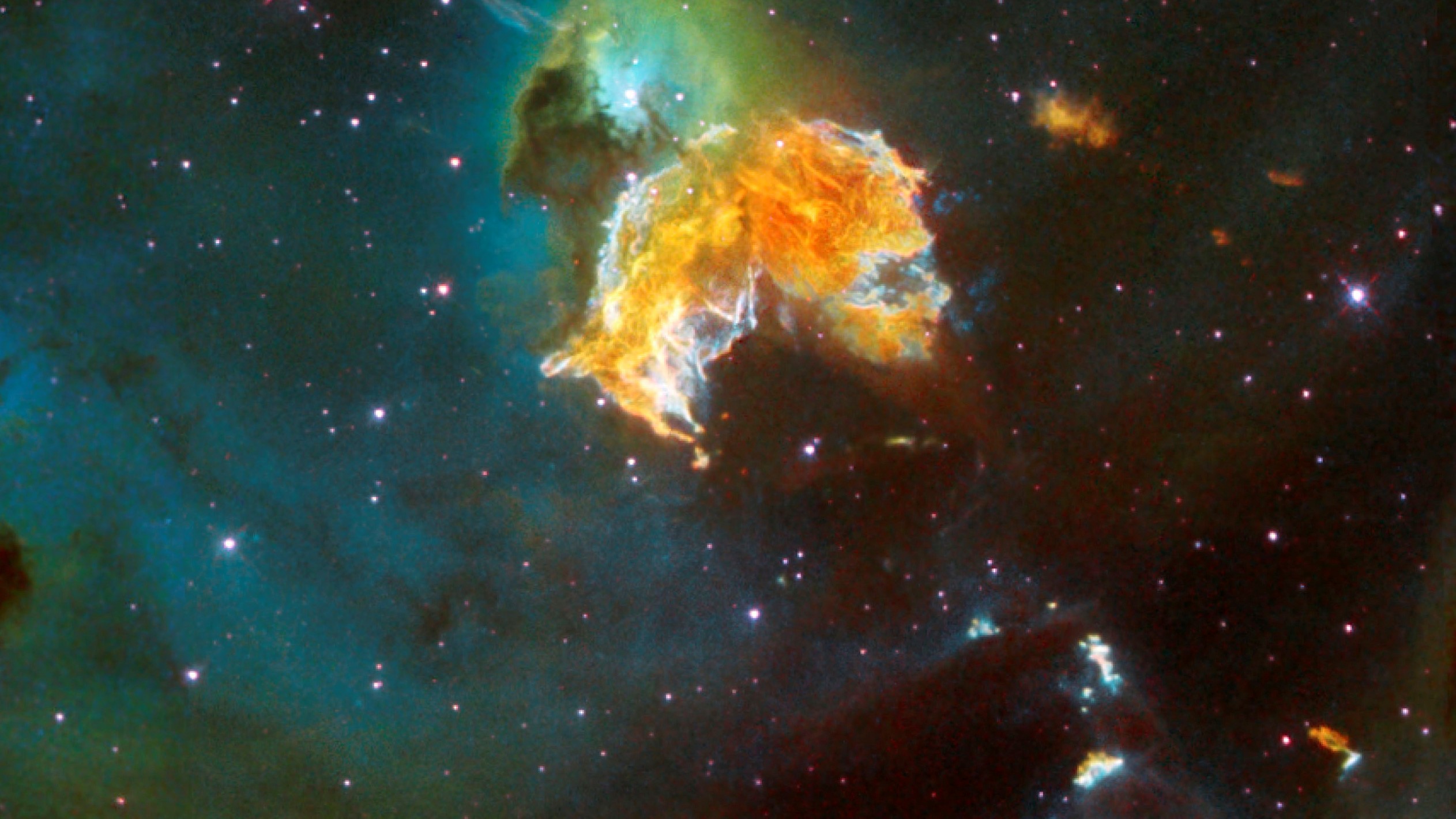Stunning supernova remnant looks like Pac-Man gulping down stars
NASA recently released the image, which was captured by the Hubble telescope.

That is not a joyous Pac-Man munching its way across the cosmos. Even so, this remnant of a stellar explosion looks an awful lot like the iconic video game gobbler in a newly released NASA image captured by the Hubble Space Telescope.
The object, known as N 63A, is actually the remains of a supernova — a violent explosion caused by a star imploding under its own weight at the end of its life — located in the Large Magellanic Cloud (LMG), a nearby galaxy located 163,000 light-years from the Milky Way and one of the few galaxies to be visible with the naked eye from Earth.
The LMG houses several star-forming regions, or nebulas, where large clouds of gas condense and collapse into baby stars. The supernova remnant is located in one of these stellar nurseries, surrounded by numerous stars, and this high concentration of stars resembles the power pellets that are gulped down by Pac-Man in the famous video game.
Related: 8 galaxies with unusual names
Supernovas are known to trigger star and planet formation in their surrounding areas by blasting out gas and heavy elements. However, in this case the powerful shock waves appear to have stalled star formation in the region by dispersing the surrounding gas that was already in the process of birthing new stars, according to NASA.
But N 63A is still relatively young, and as it settles down into its final configuration it will likely kick-start its own star-forming region in the future, according to NASA.
Between June and July, the Hubble telescope was out of action for just over a month after a hardware malfunction caused NASA to place it in "safe mode," Live Science previously reported. But technicians were able to reboot the satellite, which was launched in 1990, and it is now back to taking out-of-this-world photos of the surrounding universe.
Get the Space.com Newsletter
Breaking space news, the latest updates on rocket launches, skywatching events and more!
The image was released as NASA's Image of the Day on Oct. 12.
Originally published on Live Science.
Join our Space Forums to keep talking space on the latest missions, night sky and more! And if you have a news tip, correction or comment, let us know at: community@space.com.

Harry is a U.K.-based staff writer at Live Science. He studied Marine Biology at the University of Exeter (Penryn campus) and after graduating started his own blog site "Marine Madness," which he continues to run with other ocean enthusiasts. He is also interested in evolution, climate change, robots, space exploration, environmental conservation and anything that's been fossilized. When not at work he can be found watching sci-fi films, playing old Pokemon games or running (probably slower than he'd like).










